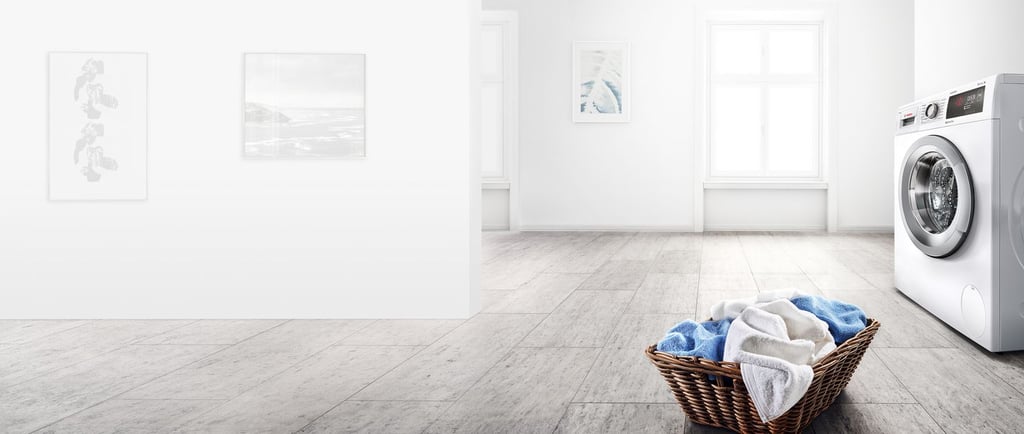How to Repair a Leaking Washing Machine (Easy DIY Fixes!)
Wondering how to repair a leaking washing machine? Learn the common causes, step-by-step fixes, and when to call a professional. Solve your washer leak issue today!
LAUNDRY
11/4/20244 min read


Step-by-Step Guide: How to Repair a Leaking Washing Machine
A leaking washing machine can cause significant water damage to your floors and walls. If you catch the issue early, you might be able to resolve it yourself and avoid costly repairs. In this step-by-step guide, we’ll walk you through how to identify and fix a leaking washing machine. However, if you find that the issue is more complex or beyond your skill level, don’t hesitate to contact a professional washing machine repair service in Doha like FixMyHive Washing Machine Repair in Doha.
Step 1: Unplug and Inspect the Machine
Before starting any repair work, always unplug the washing machine to ensure your safety. You want to avoid any electrical hazards while working on the appliance. Once it’s unplugged, make sure to turn off the water supply to the washing machine to prevent further leaking.
Step 2: Identify the Source of the Leak
The next step is to figure out where the water is leaking from. A washing machine can leak in several places, including:
Hoses: Check both the inlet and drain hoses. These hoses are often the source of leaks due to wear and tear.
Door Seal: If you have a front-load washer, inspect the door seal for cracks, rips, or debris buildup.
Water Pump: If the leak is coming from beneath the machine, it could be an issue with the water pump or the pump seal.
Drum: Leaks around the drum can be caused by a damaged drum seal.
Washer Tub: Sometimes, leaks may occur due to a crack in the washer tub itself.
Step 3: Inspect the Inlet and Drain Hoses
Leaking water from the hoses is the most common issue with washing machines. To inspect the hoses:
Remove the back panel of the machine or tilt the washer forward to access the hoses.
Check for any visible cracks, holes, or loose connections.
If the hose is cracked or damaged, replace the hose with a new one. You can buy replacement hoses at most appliance stores or online.
If the hose is loose, tighten the connection. Use pliers to ensure the hose is securely attached but be careful not to overtighten and damage the threads.
Step 4: Check the Door Seal (for Front-Load Washers)
For front-load washers, a common source of leaks is the door seal. Over time, the seal can become cracked or brittle, allowing water to escape during the wash cycle.
Inspect the door seal for any visible cracks or damage.
Clean any debris or mold buildup from the rubber gasket. Use a cloth soaked in soapy water or a mild bleach solution.
If the seal is cracked or torn, you will need to replace the door seal. You can order a replacement from the washing machine manufacturer or online.
Step 5: Inspect the Water Pump
The water pump is responsible for draining water from the washing machine. If the pump is leaking, it may have a damaged seal or cracked housing.
Remove the front or back panel of the washing machine to access the water pump.
Look for any cracks in the pump housing or signs of wear on the pump seal.
If you find damage, you will need to replace the water pump. This part is available from appliance repair shops or online.
Step 6: Examine the Washer Tub
Leaks around the washer tub are less common but can still occur if the tub becomes cracked. A leaking washer tub is more difficult to repair and may require professional attention.
If you notice water coming from the tub, inspect it for any visible cracks.
If the tub is cracked, contact a professional washing machine repair service, as replacing the washer tub can be complex and expensive.
Step 7: Check the Drum Seal
Leaks near the drum may be caused by a faulty drum seal. The drum seal prevents water from leaking out of the drum while it’s spinning.
If the drum seal is damaged, you will need to replace it. This can be tricky, so consult your washing machine's user manual for instructions or seek professional help if you’re unsure.
Step 8: Test the Machine
Once you've completed the repairs, reconnect the washing machine to the water supply and plug it back in. Run a short cycle to check for any leaks.
If the machine still leaks, check the area where the leak was coming from and verify your repair was successful.
If the leak persists, it may be time to call a professional to help diagnose and repair the issue.
Step 9: Call a Professional if Needed
If you’ve gone through all the steps above and the leak persists, or if the problem is beyond your expertise, it’s time to reach out to a professional. A trained technician can provide a thorough inspection and ensure that your washing machine is properly repaired.
If you're in Doha and need professional help, don’t hesitate to contact our expert team at FixMyHive Washing Machine Repair in Doha. We provide fast and reliable washing machine repairs for all models.
Conclusion
Repairing a leaking washing machine can be a straightforward DIY task if the problem is minor, such as a hose leak or a faulty door seal. However, more complicated issues like a damaged water pump or washer tub may require professional help. By following the steps outlined in this guide, you can potentially save on repair costs and prevent water damage.
For more tips and expert washing machine repair services in Doha, visit FixMyHive Washing Machine Repair in Doha.
Fixmyhive - DIY
Step-by-step guides for home appliance repairs.
About Us | DIY Guides | Tools & Resources | Blog | Contact
© 2024. All rights reserved.
